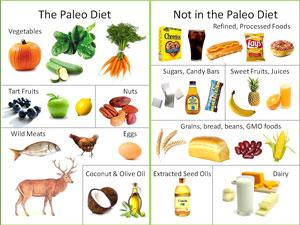An article in The Atlantic several months ago caught my attention. It refutes the widespread notion that men think about sex every seven seconds. I have always found that an absurd idea even for teenagers and young men whose bodies often seem to be hijacking them, because every seven seconds amounts to an astounding 7,200 times a day! Nothing is that interesting.
All of us think about food, though, and if not 7,200 times a day, probably more than just at breakfast lunch and dinner. My 6 a.m. exercise class routinely discusses breakfast biscuits, shrimp and grits recipes and what we cooked over the weekend even as we walk a treadmill and lift weights. Our trainers give us rich chocolates for Christmas.
Frankly, I think this is a good thing. What’s more, I think many of us are getting more careful about what we put in our bodies in an effort to get more use out of them and for a longer time.

Until World War II, most Americans ate what we now think of as “unprocessed” food. There were some canned goods, but we were still close enough to the land that if we were not actual farmers, we had gardens. We shopped almost daily for freshly cut meats and locally or regionally grown produce. We cooked and ate our meals at home with our families. Giant home freezers did not exist, nor did chain restaurants or fast food outlets.
World War II brought us processed foods like powdered milk and eggs and processed fruits. The idea was that the highest quality foods went to our troops, and the folks back home would make do, which they proudly did. We can debate the long-lasting effects of processing, but it is obvious to me that the fresher and closer to its natural state our food is, the better it is for our bodies.
Enter the age of farm-to-table restaurants, Paleo eating plans, sushi bars, GMO/pesticide/antibiotic free meats and dairy products, wild-caught seafood, spinach smoothies with hemp seed and all the other ways we are fleeing from processed and industrialized food. My observations about American eating trends are unscientifically my own, but this quest for better quality food seems particularly pronounced among younger people, the millennials.
The Precious Jewels and their contemporaries know about and enjoy foods, restaurants and cooking techniques I have never heard of, and probably would have astounded my grandmother. She was a world-class Southern cook, and her scalloped oysters — just oysters, butter, milk and salt and pepper, could make grown men weep, but I cannot image a sushi bite passing her lips. I am confident she never heard, much less uttered, the word “aioli.”
Consider what is going on in America’s fast food industry, specifically the granddaddy of fast food, McDonald’s. It is an industry that appeals to and courts young people who are on the go, who have limited wallets and who may not be in cooking situations. They are the folks who have historically “grabbed a burger” — except not so much these days.
Ronald McDonald aficionados need not panic. McDonald’s remains one of the world’s best-known and valuable brands, and its revenues are three times that of its nearest U.S. competitor, Subway. It is not going anywhere anytime soon, but there are troubling signs. U.S. sales have dropped by an alarming 15 percent, and efforts to make the menu greener and healthier are getting ho-hum reactions. Apple slices in Happy Meals, more chicken than beef served last year for the first time in history, no more “pink slime” (you don’t really want to know what that is), and fancy beverages have not received the press that workers demanding higher pay and calorie counts have. In fairness, other large fast-food chains are having similar problems. The ones that are not are small — and probably more nimble — making change easier.
McDonald’s has an image problem and is fighting back with new food offerings and social-media campaigns, including blogs by moms touting the quality and yumminess of the menu. But in an age when “foodies” with ideas of local sourcing, sustainability, purity, nutritional value and cross-cultural eating seem to be on every corner, food that comes wrapped in slick paper or in cardboard boxes seems doomed to lose.
The history of culture is that trends are always in the air, and the trend now is clearly back toward unprocessed foods that are, by definition, not “fast foods.” Remember what happened to film when digital cameras trended?
Some trends simply cannot be stopped.
Years ago, one of the Precious Jewels invited a little friend over to play. From the next room, I overheard our guest say she was hungry and suggest the two get a soda and some chips. The Precious Jewel replied matter of factly, “We do not have any of that. My mother is a health-food nut.”
The Dicksons began
trendy early.